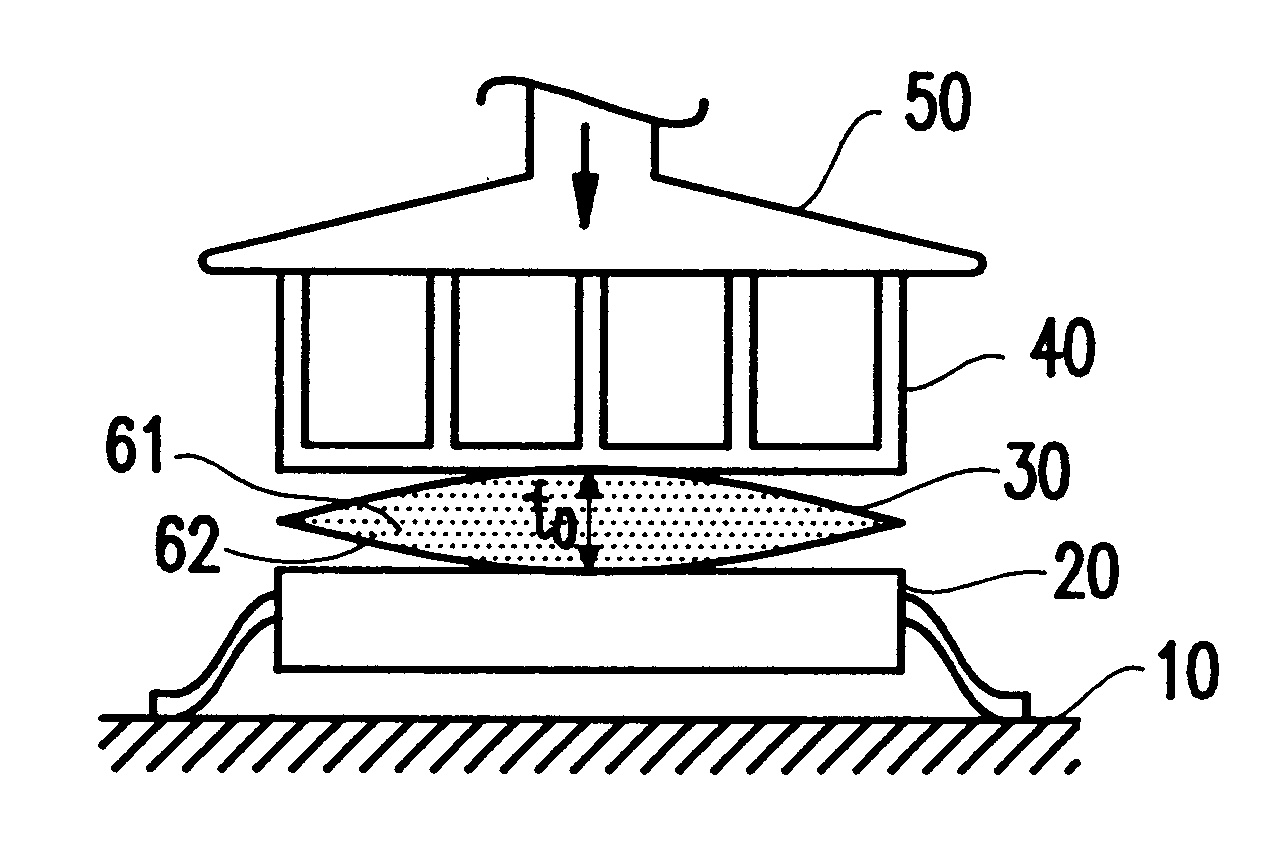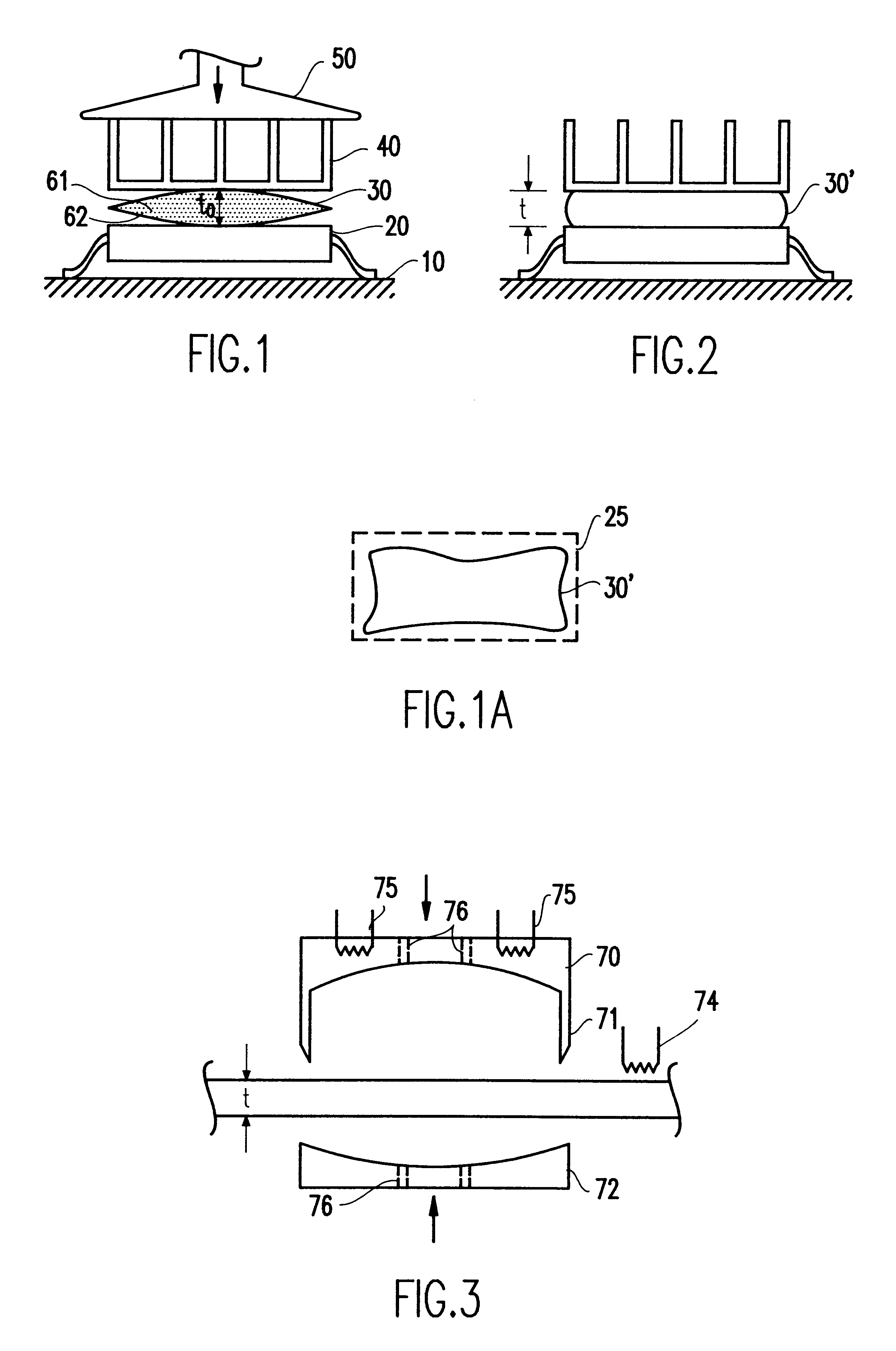Thermoplastic adhesive preform for heat sink attachment
a technology of adhesive preforms and heat sinks, which is applied in the direction of manufacturing tools, transportation and packaging, light and heating equipment, etc., can solve the problems of circuit elements being damaged, connections formed, and general increase in heat dissipation requirements
- Summary
- Abstract
- Description
- Claims
- Application Information
AI Technical Summary
Benefits of technology
Problems solved by technology
Method used
Image
Examples
Embodiment Construction
Referring now to the drawings, and more particularly to FIG. 1, there is shown, in cross-sectional view, an adhesive preform 30 in accordance with the invention together with an electronic package 20 and a heat sink 40 which are to be bonded thereby. As alluded to above, when a bond is to be formed, the electronic package 20 and the heat sink 40 are assembled together with the thermoplastic preform 30 sandwiched therebetween and the package and heat sink pressed toward each other (e.g. by support 10 and press 50) while the entire assembly is heated. Heating of the entire assembly can be reduced somewhat by preheating of the adhesive preform prior to assembly. ,
It can be readily appreciated that if the adhesive preform is substantially flat, irregularities in the surface of the package 20, preform 30 and / or heat sink 40 will prevent intimate contact over the entire interfaces between these components prior to bonding. Thus when the surfaces are pressed together, ambient gases will be...
PUM
| Property | Measurement | Unit |
|---|---|---|
| perimeter | aaaaa | aaaaa |
| thickness | aaaaa | aaaaa |
| coefficient of thermal expansion | aaaaa | aaaaa |
Abstract
Description
Claims
Application Information
 Login to View More
Login to View More - R&D
- Intellectual Property
- Life Sciences
- Materials
- Tech Scout
- Unparalleled Data Quality
- Higher Quality Content
- 60% Fewer Hallucinations
Browse by: Latest US Patents, China's latest patents, Technical Efficacy Thesaurus, Application Domain, Technology Topic, Popular Technical Reports.
© 2025 PatSnap. All rights reserved.Legal|Privacy policy|Modern Slavery Act Transparency Statement|Sitemap|About US| Contact US: help@patsnap.com


